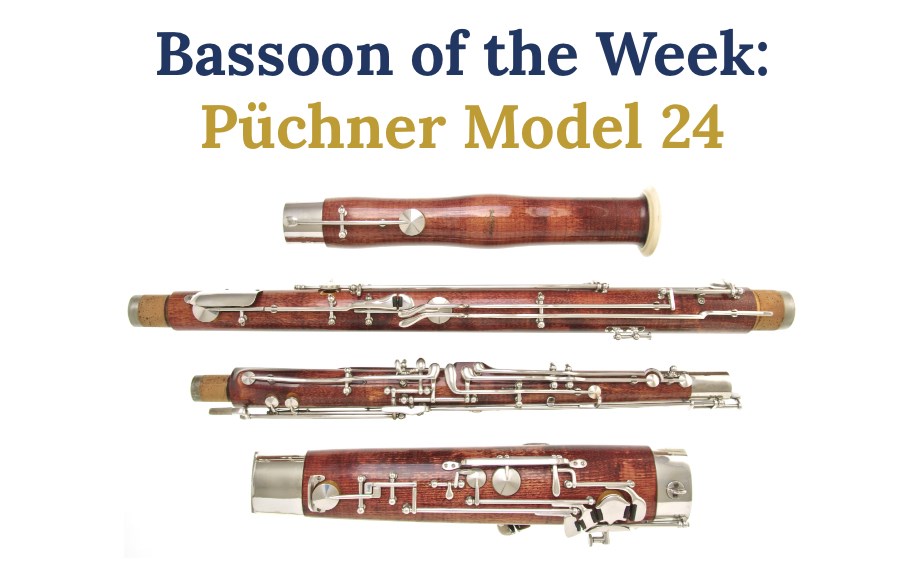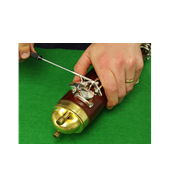Bassoon of the Week: The Püchner Model 24 – a Bit of a Mystery
October 24th, 2025

The name Püchner has been associated with woodwind instrument making since 1898 when Vinzenz Püchner started making bassoons and oboes under the Püchner name in Glaslitz, Bohemia – the main centre for woodwind making in Europe in the 19th and first half of the 20th centuries. The firm stayed in Glaslitz, called Kraslice after the first world war, until it was nationalised and then liquidated in 1948 with the assets being absorbed into Amati under the direction of the Czechoslovakian government.
The Püchner family emigrated to West Germany in 1948 and, after a hiatus of a few years, started making instruments again in the town of Nauheim under the name of Josef Püchner, Vinzenz’s son.
The Famous Model 23
Throughout its history Püchner focused on professional bassoons. Everyone – who plays the bassoon at least – is familiar with the Model 23, which has been Püchner’s standard bassoon model since the 1960s; it has always been regarded as at, or close to, the pinnacle of the bassoon making craft. The Model 23’s specification has evolved over the years, but a good-condition example from any age will be worthy of a close look if you are in the market for a good bassoon.
The Mysterious Model 24
And then there’s the Model 24 – a bit of an enigma. Take a look at the one we've currently got for sale here.
This model doesn’t appear in Püchner’s current catalogue and it can be a bit of a mystery to identify where it fits into the Püchner range, especially vis a vis the Model 23.
You might assume from the numbering that the Model 24 would be a step up from the Model 23, and that may have been the intention – but in practice the two are almost identical.
Without a detailed knowledge of the specifications of both the Model 23 and 24 and their development over time it is very difficult to say exactly how the Model 24 differs from the Model 23.
To all intents and purposes a Model 24 looks, plays and sounds identical to a Model 23 from the same period. And even keywork differences aren’t necessarily a differentiator because Model 23s can differ themselves. In fact, the only way we know that the Model 24 we currently have for sale is in fact a Model 24 and not a Model 23 is that that is what it states on the original paperwork from Püchner.
So, buy a Model 24 and get a Model 23 with a couple of keywork variations. Or maybe no keywork variations at all if the Model 23 with which it is compared has the same keywork variations!
How Does the Model 24 Play?
The Model 24 we have for sale is a one-very-careful-owner example bought direct from Püchner in 1979. It hasn’t been played since COVID but was played regularly up until that point. We have given it a full overhaul and re-pad and it is ready for the next step on its journey with a new owner.
Here's what Oliver Ludlow says about it:
“It plays beautifully with all the characteristics you would expect from a top bassoon maker. Anyone familiar with a Model 23 will be immediately at home.
“With a high E as well as high D keys and 13 rollers, it’s very well specified. The only difference from a standard Model 23 of the same era that I can spot is the omission of the AB/Bb trill key for the right-hand thumb – and that’s a key few players will miss!”
Have a listen to a Püchner Model 23 being played here:
Try it Yourself
If you are interested in this Model 24 just get in touch. You can:
- Visit us to try it in person
- Have it sent to you through our popular Try Before You Buy service.
Who knows, this “mystery” Model 24 might just become your next musical partner.




